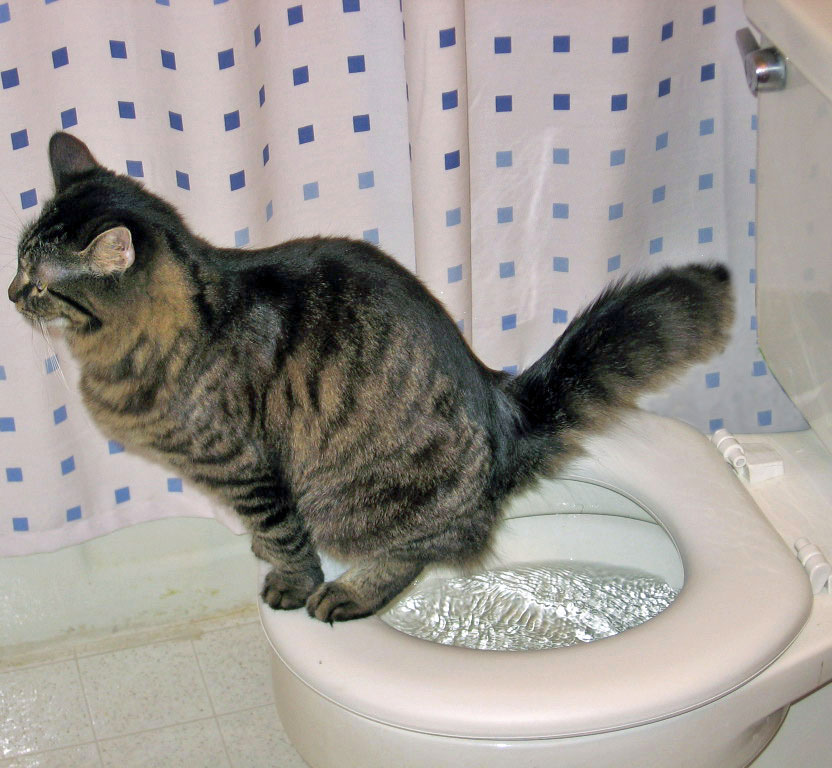Prevent Bathroom Emergencies: Don't Flush Cat Poop Down Your Toilet - Expert Guidance
Prevent Bathroom Emergencies: Don't Flush Cat Poop Down Your Toilet - Expert Guidance
Blog Article
They are making several great points on the subject of Don’t flush cat feces down the toilet as a whole in this article followed below.

Intro
As pet cat owners, it's necessary to be mindful of just how we throw away our feline pals' waste. While it may seem convenient to flush feline poop down the toilet, this practice can have detrimental consequences for both the environment and human health.
Ecological Impact
Flushing pet cat poop introduces dangerous virus and bloodsuckers into the water system, posing a considerable threat to water ecological communities. These impurities can adversely influence aquatic life and compromise water high quality.
Wellness Risks
Along with environmental issues, purging pet cat waste can also pose wellness dangers to humans. Feline feces may have Toxoplasma gondii, a parasite that can create toxoplasmosis-- a potentially severe health problem, especially for expecting ladies and individuals with damaged body immune systems.
Alternatives to Flushing
Thankfully, there are more secure and much more responsible ways to take care of pet cat poop. Consider the adhering to alternatives:
1. Scoop and Dispose in Trash
One of the most common technique of disposing of cat poop is to scoop it into a naturally degradable bag and toss it in the garbage. Make certain to use a devoted litter scoop and throw away the waste without delay.
2. Usage Biodegradable Litter
Go with naturally degradable pet cat clutter made from materials such as corn or wheat. These clutters are environmentally friendly and can be securely taken care of in the garbage.
3. Bury in the Yard
If you have a backyard, consider burying feline waste in a marked location far from vegetable yards and water sources. Make certain to dig deep enough to avoid contamination of groundwater.
4. Mount a Pet Waste Disposal System
Invest in a family pet waste disposal system especially designed for pet cat waste. These systems use enzymes to break down the waste, lowering smell and ecological impact.
Verdict
Liable pet dog ownership extends beyond providing food and sanctuary-- it also involves proper waste management. By avoiding purging cat poop down the bathroom and choosing alternative disposal methods, we can reduce our ecological footprint and protect human health.
Why Can’t I Flush Cat Poop?
It Spreads a Parasite
Cats are frequently infected with a parasite called toxoplasma gondii. The parasite causes an infection called toxoplasmosis. It is usually harmless to cats. The parasite only uses cat poop as a host for its eggs. Otherwise, the cat’s immune system usually keeps the infection at low enough levels to maintain its own health. But it does not stop the develop of eggs. These eggs are tiny and surprisingly tough. They may survive for a year before they begin to grow. But that’s the problem.
Our wastewater system is not designed to deal with toxoplasmosis eggs. Instead, most eggs will flush from your toilet into sewers and wastewater management plants. After the sewage is treated for many other harmful things in it, it is typically released into local rivers, lakes, or oceans. Here, the toxoplasmosis eggs can find new hosts, including starfish, crabs, otters, and many other wildlife. For many, this is a significant risk to their health. Toxoplasmosis can also end up infecting water sources that are important for agriculture, which means our deer, pigs, and sheep can get infected too.
Is There Risk to Humans?
There can be a risk to human life from flushing cat poop down the toilet. If you do so, the parasites from your cat’s poop can end up in shellfish, game animals, or livestock. If this meat is then served raw or undercooked, the people who eat it can get sick.
In fact, according to the CDC, 40 million people in the United States are infected with toxoplasma gondii. They get it from exposure to infected seafood, or from some kind of cat poop contamination, like drinking from a stream that is contaminated or touching anything that has come into contact with cat poop. That includes just cleaning a cat litter box.
Most people who get infected with these parasites will not develop any symptoms. However, for pregnant women or for those with compromised immune systems, the parasite can cause severe health problems.
How to Handle Cat Poop
The best way to handle cat poop is actually to clean the box more often. The eggs that the parasite sheds will not become active until one to five days after the cat poops. That means that if you clean daily, you’re much less likely to come into direct contact with infectious eggs.
That said, always dispose of cat poop in the garbage and not down the toilet. Wash your hands before and after you clean the litter box, and bring the bag of poop right outside to your garbage bins.
https://trenchlesssolutionsusa.com/why-cant-i-flush-cat-poop/

We had been guided to that editorial on Can You Flush Cat Poo or Litter Down the Toilet? through an acquaintance on our other website. Are you aware of another person who is truly interested in the topic? Feel free to promote it. Thank you for your time. Visit us again soon.
Call Today Report this page